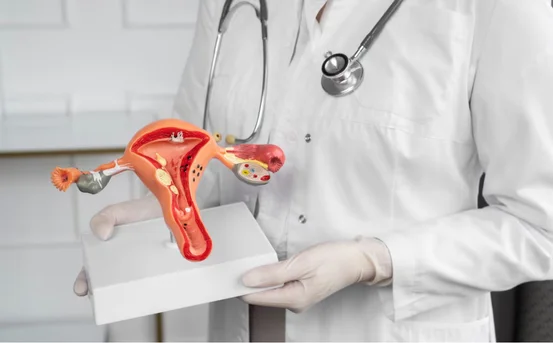Carotid endarterectomy is a widely performed surgical procedure aimed at preventing stroke by removing plaque buildup from the carotid arteries in the neck. While the surgery can be lifesaving, like any invasive procedure, it carries the risk of complications. Understanding these potential issues can help patients make informed decisions and prepare for a smoother recovery.
While carotid endarterectomy is generally safe and effective, it is still a major vascular surgery and, like all surgical procedures, carries certain risks. These complications may range from mild and temporary side effects to more serious outcomes like stroke, heart attack, or nerve damage.
What Is Carotid Endarterectomy?
Carotid endarterectomy (CEA) is a surgical procedure that clears atherosclerotic plaque from the carotid arteries major blood vessels that supply oxygen-rich blood to the brain. These arteries can become narrowed due to a condition called carotid artery stenosis, which significantly increases the risk of stroke.
The surgery involves making an incision on the side of the neck, opening the artery, removing the plaque, and then stitching the artery back up, sometimes using a patch to widen the artery.
Why Complications Can Occur?
Even though carotid endarterectomy is generally safe, it is a delicate operation involving blood vessels near the brain. Factors such as the patient’s age, overall health, presence of other medical conditions, and the surgeon’s experience can influence the likelihood of complications. Additionally, the nature and severity of the arterial blockage also play a role.
Complications may be immediate occurring during or shortly after the surgery or delayed, developing days or even weeks later.
Common Complications of Carotid Endarterectomy
-
Stroke :- Ironically, one of the most significant risks of carotid endarterectomy is stroke the very event it aims to prevent. A stroke can happen if a blood clot or debris from the artery travels to the brain during the procedure. This risk is higher in emergency cases or in patients with unstable plaque.
According to studies, the risk of stroke from carotid endarterectomy is about 2–3% in asymptomatic patients and up to 6% in those who have already had symptoms like transient ischemic attacks (TIAs).
-
Heart Attack :- The stress of surgery, especially in older individuals or those with pre-existing heart disease, can trigger a heart attack. Carotid endarterectomy often requires general anesthesia, which may put extra strain on the cardiovascular system.
Heart monitoring before, during, and after surgery is crucial, particularly for patients with a known history of coronary artery disease or previous myocardial infarctions.
-
Cranial Nerve Injury :- There are several cranial nerves near the carotid artery that control functions such as swallowing, speech, and facial movement. During surgery, these nerves can be stretched, bruised, or damaged. Although most cranial nerve injuries from carotid endarterectomy are temporary, they can cause discomfort and functional issues.
Patients may experience hoarseness, difficulty swallowing, numbness in the tongue, or a drooping corner of the mouth. Most symptoms resolve within a few weeks or months, but in rare cases, the damage may be permanent.
Less Common but Serious Complications
- Wound Complications and Infection :- The surgical site on the neck may develop redness, swelling, or infection. This can be particularly concerning if the infection spreads to the artery, which could lead to life threatening bleeding. Proper wound care and prompt reporting of unusual symptoms can help prevent escalation.
- Bleeding and Hematoma :- Some patients may experience bleeding at the surgical site, which can lead to the formation of a hematoma (a collection of blood under the skin). A large hematoma may compress the airway and become an emergency. Surgeons use meticulous techniques and sometimes place a surgical drain to minimize this risk.
- Re narrowing of the Artery (Restenosis) :- In the months or years following surgery, the carotid artery may gradually narrow again a condition known as restenosis. This may be due to scar tissue formation or continued atherosclerosis. Although less common with modern surgical techniques, restenosis may require further treatment, including another surgery or carotid artery stenting.
- High or Low Blood Pressure :- Blood pressure regulation after surgery is crucial. Sometimes, patients experience significant increases or drops in blood pressure due to nerve disturbances or changes in blood flow dynamics. Uncontrolled blood pressure can increase the risk of stroke, bleeding, or heart complications after surgery.
Rare Complications That Require Attention
- Seizures :- Although rare, seizures can occur following carotid endarterectomy, particularly in patients with previous brain ischemia. These events may be linked to sudden changes in blood flow to previously deprived brain tissue.
- Hyperperfusion Syndrome :- This is a rare but serious condition where the brain receives too much blood too quickly after the artery is cleared. Symptoms may include severe headache, confusion, seizures, or even brain hemorrhage. Prompt medical attention and careful post operative monitoring are essential to manage this risk.
How to Reduce the Risk of Complications
While no surgery is without risk, there are steps both surgeons and patients can take to reduce the likelihood of complications.
-
Choose an experienced vascular surgeon :- Studies show that complication rates are significantly lower when the procedure is performed by a high-volume surgeon or center.
-
Manage underlying conditions :- Controlling high blood pressure, diabetes, and cholesterol before surgery improves outcomes.
-
Stop smoking :- Smoking cessation reduces the risk of restenosis and enhances wound healing.
-
Adhere to post operative instructions :- Follow up appointments, medication compliance, and proper wound care are essential in preventing complications.
-
Preoperative screening :- Cardiac evaluations and imaging studies can help identify high-risk patients and tailor the surgical approach accordingly.
Recovery and Long Term Outlook
Most patients recover well from carotid endarterectomy, especially when complications are avoided or managed early. The average hospital stay is 1–2 days, with complete recovery usually taking a couple of weeks. Regular follow up with vascular specialists, lifestyle changes, and medications such as antiplatelets or statins are necessary to maintain long term vascular health.
When to Seek Medical Help?
After surgery, patients should immediately report any signs of complications such as sudden weakness, speech difficulty, swelling in the neck, chest pain, shortness of breath, or severe headache. Timely intervention can prevent serious outcomes.
Conclusion
Carotid endarterectomy remains a critical tool in stroke prevention, especially in patients with significant carotid artery stenosis. While complications are possible, most are manageable and occur infrequently when the procedure is performed by experienced hands. With proper preparation, risk awareness, and diligent follow up, patients can confidently undergo this surgery with a favorable outcome.























